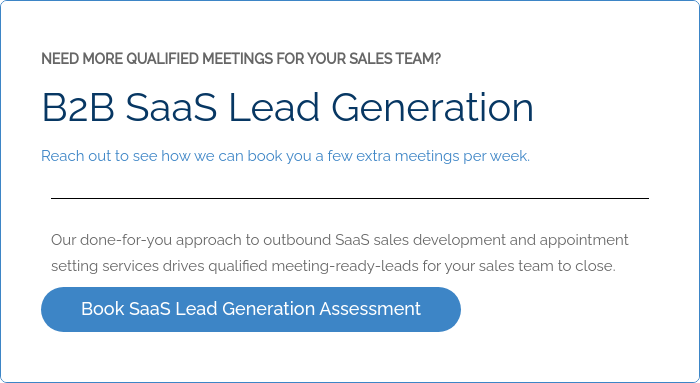Learn effective B2B lead generation strategies to reduce lead generation costs, improve lead conversion rates and reduce sales cycles.
In today’s competitive business landscape, generating leads is crucial for the success of any B2B SaaS company. However, simply relying on traditional methods such as cold-calling and email blasts may not be enough to yield optimal results.
That’s why in this article, we will delve into actionable B2B SaaS lead generation strategies that can help companies effectively reach their target audience, build brand awareness, and ultimately, drive revenue growth, through outbound account-based sales funnels.
From leveraging social media and content marketing to utilizing marketing automation and referral programs, we will explore various tactics that can give your business a competitive edge in the SaaS industry.
Short Summary
- Highlighting the critical role of lead generation in the competitive B2B SaaS landscape.
- Acknowledging the limitations of traditional methods like cold-calling and email blasts.
- Exploring actionable B2B SaaS lead generation strategies for reaching the target audience, building brand awareness, and driving revenue growth.
- Emphasizing the use of outbound strategies for targeted lead generation.
- Promising insights into leveraging social media, content marketing, marketing automation, and referral programs for competitive advantage in the SaaS industry.
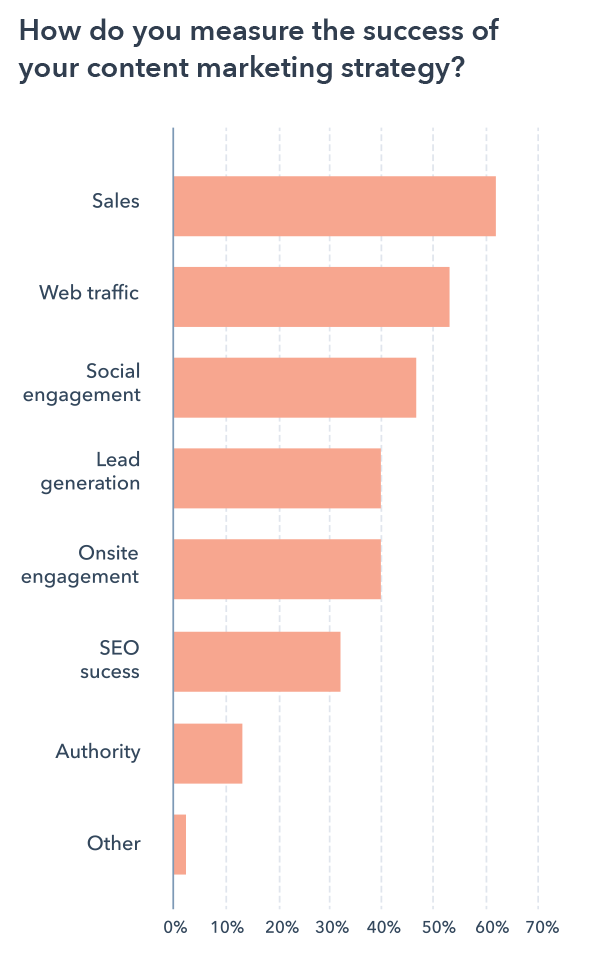
What does “Generating Leads” Mean?
When we say generating leads, we’re talking about attracting potential customers to your website or social profiles and provoking them to engage with your sales team.
What is Lead Generation in SaaS?
Lead generation is a critical component of any successful SaaS business, as it allows companies to identify potential customers, understand their needs and pain points, and tailor their marketing and sales efforts to address those needs.
By focusing on lead generation, SaaS companies can build a loyal customer base, increase revenue, and achieve long-term success in the highly competitive SaaS market.
Lead generation in SaaS refers to the process of identifying and attracting potential customers who may be interested in a software as a service (SaaS) company’s products or services.
The goal of lead generation is to collect contact information from potential customers, nurture their interest in the company’s products, and ultimately convert them into paying customers.
In the SaaS industry, lead generation typically involves a range of strategies and tactics, including website optimization, content marketing, social media marketing, email marketing, and paid advertising.
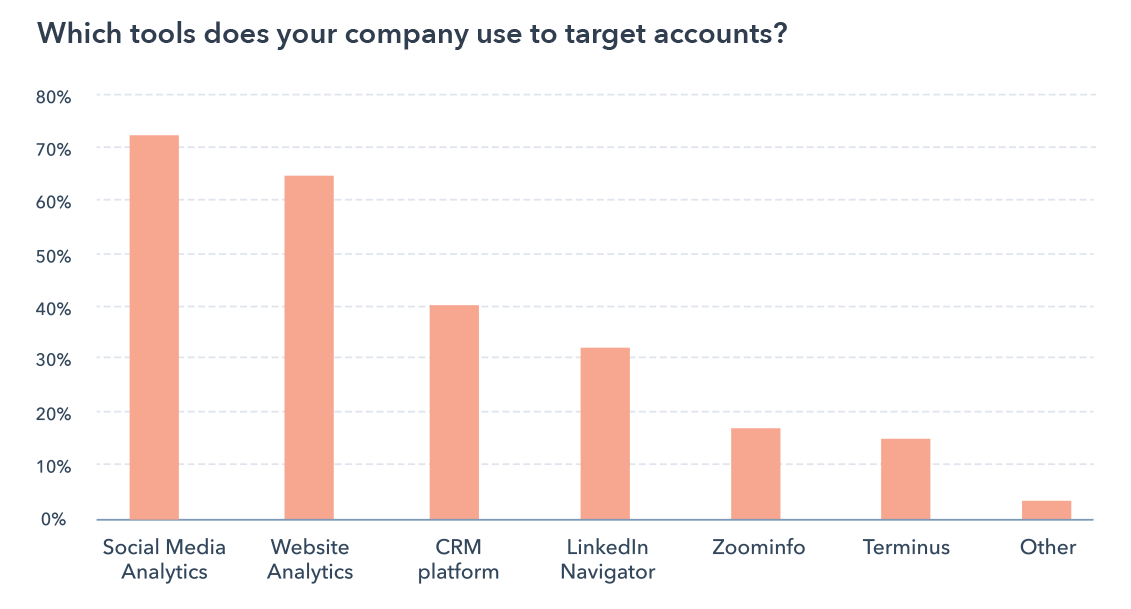
It’s important to remember that lead generation is an ongoing process. As your company grows and your customer base evolves, you’ll need to adapt your lead generation strategies to stay ahead of the curve.
By staying up-to-date with the latest trends and technologies, and constantly experimenting with the best lead generation strategies, you can build a steady stream of leads and grow your SaaS business over time.
Why is it important to have a Scalable Lead Generation Strategy as a SaaS company?
Having a lead generation strategy is crucial for the success of any SaaS company for several reasons:
1. Builds a Customer Base
An effective SaaS demand generation strategy helps to identify potential customers and convert them into paying customers. Generating leads and finding smart ways to build relationships, SaaS companies can build a loyal customer base that can sustain their business over the long term.
2. Increases Revenue
SaaS companies can increase their revenue and grow their business by converting leads into paying customers. A robust lead generation strategy helps companies achieve predictable revenue growth by consistently generating new leads and converting them into customers.
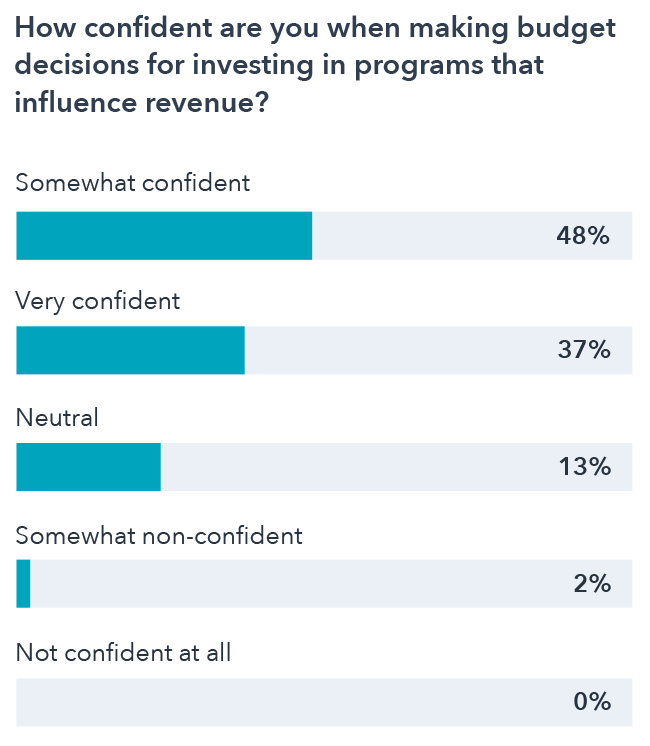
3. Enhances Brand Awareness
A strong lead generation strategy can help to enhance a SaaS company’s brand awareness by increasing its visibility and credibility in their market. By creating valuable content, engaging with potential customers on social media, and leveraging paid advertising, SaaS companies can build a strong online presence that can attract new leads and customers.
4. Improves Customer Acquisition Costs
SaaS companies who focus on generating leads can improve their customer acquisition costs by targeting the right audience with the right message.
A well-planned lead generation strategy can help to attract and convert more leads that have a higher likelihood of becoming paying customers, resulting in lower customer acquisition costs and higher profitability.
5. Allows for Continuous Improvement
Ideal state SaaS lead generation playbook provides a structured framework for collecting data and analyzing results, allowing SaaS companies to continuously improve their approach over time.
SaaS companies can maintain a competitive edge and improve their lead generation strategies by monitoring essential performance metrics like conversion rates, website traffic, and customer lifetime value. This data-driven approach allows them to continuously enhance their results.
Having a robust demand generation strategy is critical for the success of SaaS businesses. Generating more leads, boosting revenue, raising brand awareness, reducing customer acquisition costs, and enabling continuous improvement are key factors that contribute to building a sustainable and profitable business over the long term.
How much to spend on B2B SaaS lead generation
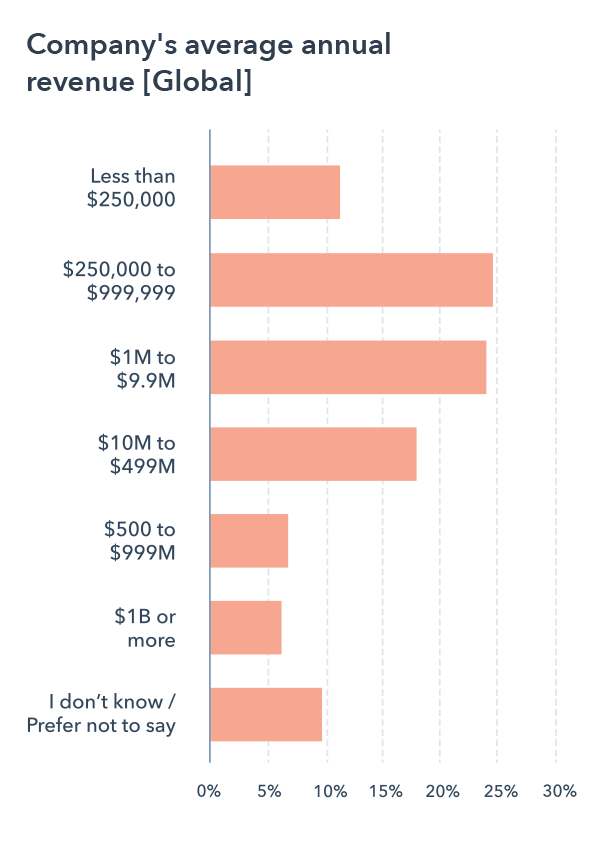
Many businesses struggle with determining how much to spend on B2B SaaS lead generation.
Here are a few things to consider when setting your lead generation budget:
-
Target Market Size: The size of the target market is a crucial factor in determining how much to spend on lead generation. If the market is small, then it may not be necessary to spend a significant amount of money on lead generation. Conversely, if the target market is large, then more resources should be allocated towards lead generation efforts.
-
Sales Cycle Length: The length of the sales cycle is another important factor to consider when setting a budget for B2B SaaS lead generation. If the sales cycle is short, then less money may be needed for lead generation efforts. However, if the sales cycle is long, then more resources should be allocated towards lead generation to ensure a consistent flow of leads throughout the cycle.
-
Lead Quality: The quality of the leads generated is crucial to the success of any B2B SaaS lead generation effort. Spending more money on lead generation may result in good-fit prospects, which can ultimately lead to more sales. Conversely, spending less money may result in lower-quality leads, which can be a waste of time and resources.
-
Competition: The level of competition in the industry can also impact how much should be spent on lead generation. If there is a lot of competition, then more money may be needed to stand out and attract potential customers. On the other hand, if there is little competition, then less money may be needed to generate leads.
-
Company Goals: Lastly, it’s essential to take the company’s objectives into account when determining a budget for B2B SaaS lead generation. If the SaaS platform is pursuing ambitious growth targets, it warrants a higher allocation of resources for lead generation. Conversely, if the company’s primary focus is maintaining a consistent revenue stream, lead generation efforts may require a lower budget.
Remember, there is no one-size-fits-all answer to how much to spend on B2B SaaS lead generation. The factors outlined above should be considered when determining a budget for omnichannel SaaS lead generation programs.
It is important to remember that lead generation is a critical process for any B2B SaaS company and that investing in quality SaaS lead generation services can ultimately lead to increased revenue and business growth.
Why measuring cost per lead is important
Measuring cost per lead is important for several reasons. These include:
Efficiency
By measuring cost per lead, you can determine the effectiveness and ROI of your lead generation program. If the cost per lead is too high, it may indicate that you need to re-evaluate your lead generation strategy and find more efficient ways to generate leads.
Budgeting
Knowing your cost per lead helps you to set realistic budgets for your marketing campaigns. It allows you to allocate resources to the most effective lead generation channels and optimize your marketing spend.
ROI
Measuring cost per lead is crucial in calculating the ROI of your demand generation efforts. You need to compare the cost of generating a lead with the revenue generated by that lead. This helps you to determine whether your marketing campaigns are generating positive returns on investment.
Optimization
Cost per lead is a metric that can be optimized. By testing different lead generation strategies and analyzing their respective cost per lead, you can identify the most efficient ways to generate leads and optimize your marketing campaigns accordingly.
How to Qualify More Leads
As a growing SaaS platform, your success is directly tied to the number of good-fit leads you can generate. However, not all leads are created equal. Some may be ready to buy immediately, while others may not be interested in your product at all. For this reason, lead generation companies will spend a significant amount of time upfront to establish a process for qualifying leads.
It’s important to qualify your leads to ensure that you’re focusing your efforts on those who are most likely to convert into actual customers. In this article, we’ll discuss the best ways to qualify leads for your SaaS platform.
1. Identify your target customer
The first step in qualifying leads is to identify your target customer. Who is your ideal customer? What are their pain points and challenges? What solutions are they looking for? Once you have a clear understanding of who your target customer is, you can create a profile of them and use it to identify potential leads.
2. Use lead scoring
Lead scoring is a process that involves assigning a numerical value to each lead based on their level of engagement with your SaaS business. This can include actions like visiting your website, filling out a form, or downloading a white paper.
Assigning a score to each lead enables you to prioritize your efforts and concentrate on those who exhibit higher engagement levels and are more likely to convert.
3. Qualify based on fit
In addition to scoring, you should also qualify leads based on fit. This means assessing whether the lead is a good fit for your product or service. Ask questions like:
-
Does the lead have a need for our product?
-
Do they have the budget to purchase our product?
-
Are they in a position to make a purchasing decision?
If the answer to these questions is yes, then the lead is likely a good fit for your product and worth pursuing.
4. Nurture leads
Providing valuable content and maintaining ongoing communication with leads over time can increase the likelihood of their eventual conversion into loyal customers, as not all leads will be ready to buy immediately, with some requiring more time and nurturing before making a purchasing decision.
5. Use data and analytics
It’s important to use data and analytics to track your lead generation activities and optimize your processes. This can include tracking key performance metrics like average conversion rate, lead quality, and lead sources.
Analyzing this data allows you to pinpoint areas for enhancement and make decisions guided by data to refine your SaaS lead generation playbook.
Qualifying leads is a critical aspect of any SaaS company’s lead generation process. Identifying your target customer, employing lead scoring, assessing based on fit, nurturing leads, and utilizing data and analytics can enhance the effectiveness of your lead generation efforts, ultimately driving more revenue for your business.
6. Work with an agency
Hiring an agency that specializes in helping SaaS companies generate leads is the easiest way to accomplish all of the above. A digital marketing agency can help you define a strategic process to generate qualified leads. This process often includes building a relevant content marketing strategy that includes informative blog posts, eBooks, infographics, video content, and other lead magnets that work to bring your website to the top of search engine results pages and drive organic traffic. After all, the first page of Google is where a potential customer is going to look to find the solution they need.
Other agencies are experts in utilizing paid advertising campaigns, like Google Ads, Facebook Ads or other social media PPC. It’s important to take your time to find the right team that can help you effectively develop powerful lead generation strategies that reach your target customers.
While “DIY’ing your digital marketing efforts can provide just as much value overtime, most SaaS companies would agree that outsourcing the work to experts who really know what they’re doing is the most efficient way to see the best results. Remember: look for a digital marketing agency with the highest customer success rates and reviews.
Types of B2B Leads
Marketing and sales are two critical functions of any business. However, when these two functions operate in silos, it can lead to inefficiencies, miscommunications, and missed opportunities.
To address these issues, many companies have started to focus on aligning their sales and marketing efforts to ensure a cohesive approach to lead generation and conversion. One key aspect of this alignment is the concept of marketing qualified leads (MQLs) and sales qualified leads (SQLs).
Marketing Qualified Leads (MQLs)
MQLs are prospects who have expressed interest in your product or service but may not be ready to make a purchase.
These leads are typically generated through inbound marketing efforts such as content marketing, email marketing, and social media marketing.
MQLs have shown some level of engagement with your brand, but they may not have reached the stage where they are ready to be handed over to the sales team.
Sales Qualified Leads (SQLs)
SQLs on the other hand, are prospects who have been vetted by the sales team and have shown a high level of interest in your product or service.
These leads are typically generated through outbound sales efforts such as cold calling, email campaigns, and targeted advertising. SQLs have a higher probability of converting into paying customers, and the sales team will typically focus their efforts on these leads.
The Importance of Sales and Marketing Alignment
Sales and marketing alignment is crucial for effective lead generation and conversion. When the two teams are working together, it ensures that the right messages are being communicated to the right prospects at the right time. This can result in better lead quality, increased conversion rates, and ultimately, increased revenue.
To achieve sales and marketing alignment, it’s important to have a clear understanding of each team’s role and responsibilities.
The marketing team should focus on generating and nurturing MQLs, while the sales team should focus on converting SQLs into paying customers. Both teams should work together to create a seamless customer journey that addresses the prospect’s pain points and provides a compelling value proposition.
Strategies to Consistently Generate Quality Leads
Websites Should Be a Top Sales Rep
Has your marketing manager been begging for a website redesign? There’s probably a reason for that.
Most businesses already generate traffic to their website yet still fail to convert most website traffic into customers. For your business to be on a business growth trajectory into 2024, it must possess the potential to attract ideal prospects and then nurture them into new clients. So, you should strategize with B2B marketing lead generation for b2b agencies that have credentials to optimize and scale lead generation programs within your particular industry.
In today’s digital age, having a website is no longer just an option, but a necessity for any business that wants to succeed. A website is a powerful tool that can help you establish your online presence, showcase your products or services, and connect with potential customers. But did you know that your website can also be a powerful lead generation tool?
Here are some ways your website can be a powerful SaaS lead generation tool:
1. Optimize your website for search
Search engine optimization (SEO) is the process of optimizing your website to rank higher in a search engine results page (SERPs). By optimizing your website for search engines, you can attract more traffic to your website, which can lead to more leads.
To optimize your website for search engines, you need to:
-
Conduct keyword research and include relevant keywords in your website’s content
-
Optimize your website’s meta titles and descriptions
-
Use header tags (H1, H2, H3) to structure your content
-
Ensure your website is mobile-friendly and has a fast loading speed
-
Build backlinks to your website from reputable sources
2. Offer valuable content
Content marketing effectively draws potential customers to your website. Offering valuable content like high-quality blog posts, ebooks, white papers, and webinars positions you as a thought leader in your industry and draws potential customers to your website or social media profiles, such as your LinkedIn company page.
To offer valuable content, you need to:
-
Understand your target audience and their pain points
-
Develop content that addresses those pain points
-
Use engaging headlines and visuals to capture your audience’s attention
-
Include calls-to-action (CTAs) in your content that encourage visitors to take action, such as signing up for your newsletter or downloading your ebook
The challenge with creating content is the amount of time it takes to brainstorm, develop, and share. A content marketing institute or professional marketing manager with strong copywriting and design skills can help you save time and still produce valuable content.
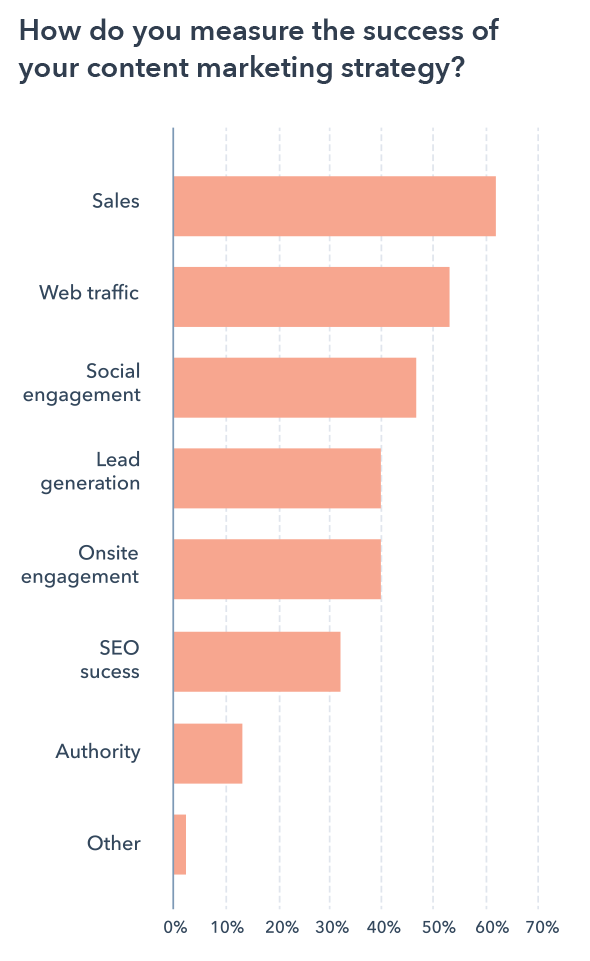
3. Use forms and landing pages
Forms and landing pages are powerful tools for lead generation. By using these types of content marketing strategies, you can collect contact information from potential customers and nurture them through the sales funnel. To build a form or landing page effectively, you need to:
-
Create a clear value proposition for your landing page offer
-
Use a visually appealing design that aligns with your brand
-
Keep the form fields simple and relevant to the offer
-
Include a clear CTA that encourages visitors to take action
A landing page can then be utilized for PPC or attracting organic traffic. Just make sure your landing page has a catchy headline that is optimized for search engine ranking.
4. Use chatbots
Chatbots, increasingly popular for lead generation, engage potential customers in real-time, answer their questions, and provide personalized recommendations.
To use chatbots effectively, follow these steps:
-
Use a conversational tone that aligns with your brand
-
Provide helpful and relevant information
-
Use machine learning to improve the chatbot’s responses over time
-
Include a clear CTA that encourages visitors to take action
Your website can be a potent lead generation tool when utilized effectively. Optimizing your website for search engines, providing valuable content, incorporating forms and landing pages, and utilizing chatbots all contribute to attracting potential customers and converting them into actual customers. Consistently testing and refining your lead generation strategies is crucial to ensure their maximum effectiveness.
7. Use pop ups
Among the classic SaaS lead generation strategies are a slightly controversial strategy called pop ups. However, pop ups are still a super effective way to generate leads–as long as they’re the right kind of pop ups.
What are the right types of pop ups exactly? Ones that provide value, deploy at the ideal time on your page, and aren’t flashy or overly intrusive. They should also be consistent with your messaging and brand guidelines.
Exit intent pop ups that deploy when a page visitor appears to be leaving your site are a great way to generate leads. If you have a relevant content, an eBook offering or a promo going on, this is one way to deliver that message to a potential customer and nurture them in your sales funnel.
Account-Based Marketing (ABM)
As the world is pretty much saturated by marketing messages, it’s difficult to stand out in any field. Being more personal has become more and more difficult and often lots of companies are trying to obtain the same email address or contact information. ABM is a term now being used for this more targeted and personal approach.
What is Account-Based Marketing (ABM)?
ABM is a targeted approach to B2B marketing that has gained significant attention in recent years. The traditional approach to B2B marketing involves generating leads through various marketing channels and nurturing them through the sales funnel until they become customers. In contrast, ABM is a more focused approach where a company identifies a set of high-value accounts and tailors its marketing efforts to target these accounts specifically.
The goal of ABM is to create a more personalized and relevant experience for the target accounts, thereby increasing the likelihood of conversion. It involves understanding the specific pain points and challenges of the target accounts and crafting a marketing strategy that addresses those issues. ABM is often used by companies that have a limited number of high-value accounts, such as enterprise software companies or financial services firms.
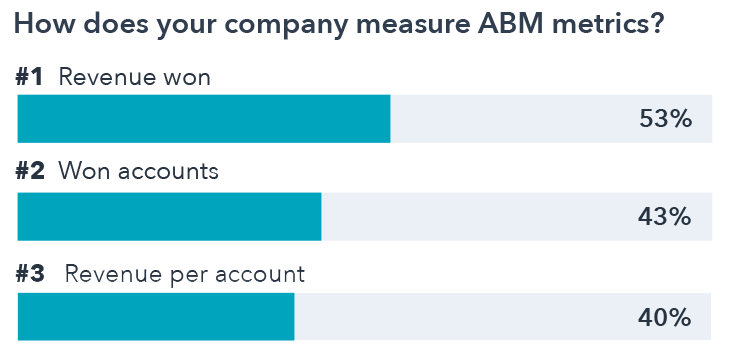
SaaS ABM process typically involves the following steps:
-
Identify target accounts: The first step in ABM is to identify the target accounts. This involves analyzing data on existing customers and using that information to identify companies that have similar characteristics.
-
Develop account profiles: Once the target accounts have been identified, the next step is to develop account profiles. This involves researching the companies and creating a detailed profile that includes information such as the company’s size, industry, pain points, decision-makers, and influencers.
-
Create personalized content: The next step is to create personalized content that speaks directly to the pain points and challenges of the target accounts. This may include creating custom landing pages, email campaigns, or targeted social media ads.
-
Engage with target accounts: Once the content has been created, the next step is to engage with the target accounts. This may involve setting up meetings with key decision-makers, sending personalized emails, or creating targeted social media campaigns.
-
Measure and optimize: Finally, it’s essential to measure the effectiveness of the ABM campaign and optimize it accordingly. This may involve analyzing engagement rates, conversion rates, and other metrics to determine what’s working and what’s not.
The benefits of ABM are clear. By targeting a select group of high-value accounts, companies can increase their conversion rates, shorten the sales cycle, and improve customer retention. Also, because ABM is highly targeted, it’s often more cost-effective than traditional marketing methods.
However, implementing an effective ABM strategy can be challenging. It requires a deep understanding of the target accounts, a significant investment in personalized content, and a highly coordinated effort across marketing, sales, and other departments. But for companies that are willing to put in the effort, ABM can be a highly effective way to grow their business and increase their bottom line.
SaaS Partnership Marketing
Partner marketing, also known as channel marketing or affiliate marketing, is a type of marketing strategy in which two or more businesses collaborate to promote each other’s products or services. Partner marketing can be an effective way for businesses to expand their reach, increase brand awareness, and generate new leads and sales.
Partner marketing works by creating mutually beneficial relationships between businesses. For example, an e-commerce store may partner with a blogger or social media influencer to promote their products to their followers. In exchange, the blogger or influencer receives a commission for any sales generated through their unique affiliate link.
Partner marketing can take many forms, including co-branded content, joint events, and cross-promotions. In co-branded content, two or more businesses collaborate to create content that promotes both of their brands. This can include blog posts, videos, or social media content. Joint events are another way for businesses to collaborate, with two or more businesses coming together to host a joint event or webinar. Cross-promotions involve businesses promoting each other’s products or services to their respective audiences.
One of the key advantages of partner marketing is that it allows businesses to tap into new markets and audiences. By collaborating with another business, companies can reach new customers who may not have been aware of their products or services before. Also, partner marketing can help businesses to build trust and credibility with their target audience. When a trusted blogger or influencer promotes a product or service, their followers are more likely to trust and consider that product or service.
Partner marketing can also be a cost-effective way for businesses to reach their target audience. Instead of investing in expensive advertising campaigns or marketing strategies, businesses can leverage the existing audiences of their partners to generate leads and sales.
Nevertheless, it’s crucial to emphasize that partner marketing demands meticulous planning and execution. Businesses should prudently choose partners that align with their brand values and objectives. Moreover, they must guarantee the provision of essential resources and support to enable partners to effectively promote their products or services.
SaaS PPC Strategy
Pay-per-click (PPC) advertising is a highly effective way to generate leads. Unlike traditional advertising methods, PPC allows businesses to target specific audiences and only pay for clicks on their ads, making it a cost-effective way to generate leads and increase conversions.
PPC advertising involves placing ads on search engines, social media platforms, or other websites. When a user clicks on an ad, the advertiser pays a fee to the publisher. This fee can vary depending on the competitiveness of the keyword or audience being targeted.
For B2B companies, PPC advertising can be especially effective because it allows them to target specific audiences based on job title, industry, and other criteria. This means that businesses can ensure that their ads are being shown to the people who are most likely to be interested in their products or services.
Besides focusing on particular audiences, PPC advertising enables businesses to monitor the performance of their campaigns. Through the analysis of metrics like click-through rates, conversion rates, and cost per click, businesses can make campaign adjustments to enhance results and boost their ROI.
Best Practices for creating PPC B2B SaaS Lead Generation Strategy
When it comes to creating effective PPC campaigns for B2B leads, there are several best practices to keep in mind. First, it is important to choose the right keywords and ad copy that will resonate with the target audience. This may involve conducting keyword research to identify the most relevant and high-converting keywords for the business.
Another best practice is to create landing pages that are specifically designed to convert PPC traffic into leads. Landing pages should be optimized for conversions, with clear calls to action and messaging that aligns with the ad copy. It is also important to ensure that landing pages are mobile-friendly and load quickly, as these factors can have a significant impact on conversion rates.
Finally, continuous monitoring and optimization of PPC campaigns are crucial for maximizing their effectiveness. This includes adjusting bids, targeting options, and ad copy based on performance data. Regularly monitoring and optimizing campaigns helps businesses generate high-quality B2B leads and achieve revenue goals.
Link Building for SaaS SEO Rankings
Link building is an essential component of search engine optimization (SEO) for B2B SaaS companies. Building high-quality backlinks can improve a company’s search engine rankings, drive more traffic to their website, and ultimately generate leads and sales.
Link building involves acquiring links from other websites that point back to a company’s website. When a website has high-quality backlinks from other reputable sites, search engines view that site as more authoritative and trustworthy, which can improve its search engine rankings.
Link building holds significant importance for B2B SaaS companies. It aids in establishing the company as an industry thought leader and raising brand awareness. Creating valuable content and obtaining backlinks from relevant websites enable B2B SaaS companies to showcase their expertise and credibility in their field.
There are several strategies that B2B SaaS companies can use to build high-quality backlinks. One effective strategy is to create valuable content that other websites will want to link to. This can include blog posts, white papers, case studies, and other types of content that provide useful information to target audiences.
Another effective strategy is to participate in guest blogging. By writing high-quality content for other websites in their industry, B2B SaaS companies can gain exposure to new audiences and acquire backlinks to their own website.
Social media serves as a valuable tool for link building. Sharing content on social media platforms and actively engaging with other industry users allows B2B SaaS companies to enhance their visibility and draw backlinks from pertinent websites.
Additionally, apart from these strategies, B2B SaaS companies can harness their relationships with partners, customers, and industry influencers to secure backlinks. Collaborating with other companies and participating in industry events and conferences enables B2B SaaS companies to expand their reach to new audiences and garner valuable backlinks.
When it comes to link building for SEO, it is important for B2B SaaS companies to focus on quality over quantity. Rather than acquiring as many backlinks as possible, companies should aim to acquire high-quality backlinks from reputable websites in their industry.
Email Marketing
Email marketing is one of the best b2b lead generation strategies components and b2b lead generation best practices of lead generation.
The most important benefit of b2b email marketing strategy is that you can target hyper-segmented audiences and leverage content personalization to help improve email engagement at each stage of your funnel.
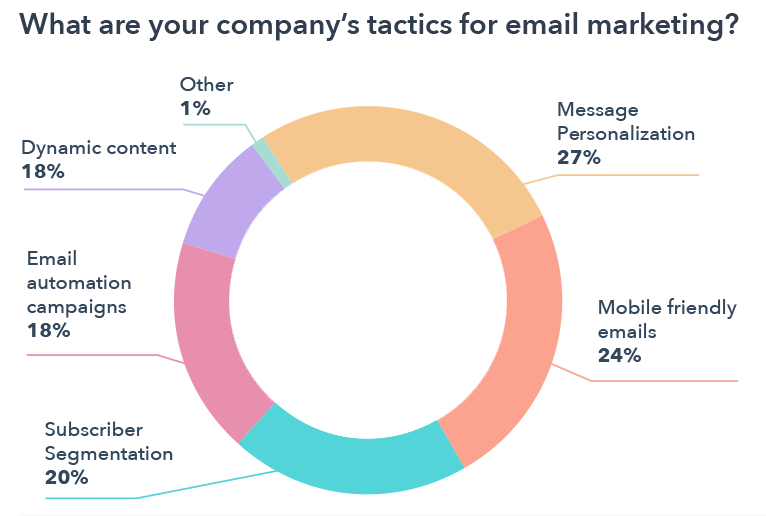
A cautiously crafted email marketing campaign that’s appropriately targeted b2b lead gen strategies and turning in the right content is a first-rate way of attaining your capacity target audience and engaging with them and helping improve b2b lead generation strategies your email marketing ROI.
Now we have the ability to be smarter than ever in whom terms of prospects we target when we target them, and the marketing channels that we target them on.
Whether we send out a newsletter or ship a promotion, we have the capability to know who opened an email and who took actions like clicking a link, and we can use these facts to adapt our future lead nurturing procedures. What’s most essential is that you effectively attract your audience with compelling content tailored to buyer personas.
Email marketing can also be used in tandem with referral marketing to perform outreach to past clients for reviews and referrals. After all, word of mouth is one of the best ways to generate leads!
Content Marketing
Content marketing is primarily based on the principle of giving something to prospective (and existing) clients for nothing in return (in most cases). Content marketing through social media is a powerful means for gaining contact details that can be used for remarketing later.
Content can tackle many sizes and styles, such as blogs, vlogs, white papers, infographics, and reports. There are many methods through which we can deliver content to our prospects: send emails, social media posts, or on other people’s sites with links to our own, for example.
What we want to attain with our content varies from demonstrating expertise or building trust in our brand to provoking interest in the goods or offerings we sell or proving our thought management.
In the end, your company’s best bet is to work with B2B inbound marketing agencies to plan and execute an inbound marketing plan focused on content marketing that moves website visitors from the top to the bottom of your marketing funnel.
Search Marketing
From the stand point of a B2B marketer, SEO is viewed as only one of many top of funnel tactics. This means that SEO does nothing to nurture leads down into the bottom of your funnel like marketing automation does. These days most marketers seek to eliminate PPC costs by ranking at the top of Google search.
Why reach out to people and go through all the problem of seeking to maintain their attention with your rigid sales playbook and sequences of email templates, when you can find out what phrases your prospects are searching for in their awareness stage of the buyer’s journey, then create content for that niche topic.
Lastly, focus on long tail search phrases, framed as questions to accommodate the rising trends of voice enabled searches. While these search phrases being focused on may only be searched less than 100 times per month, they have higher intent and higher conversion rates.
The beauty of search marketing is that many of the things that we need to do as part of a sturdy search method represent high-quality marketing hygiene: well-written content that’s straightforward to examine and relevant to its audience, a clear and transparent website written in plain English that says what you do and for whom, and content that draws people to your Web landing page. A well-applied search marketing approach crafted by leading B2B marketing agencies will consequently benefit you.
Social Marketing
Social proof is key to building trust with your target customers. This is where social media comes into play. It not only supports your existing digital marketing efforts, but can stand alone as a way to generate qualified leads.
Appropriate social media marketing is a key component for lead generation, but keep in mind that that only benefits the top of your funnel. That means understanding your clients and your ideal prospects. Take a look at social profiles of your competitors and see what is getting the most likes and shares. This will give you great insights into the types of content target customers find the most useful.
With social media marketing, you have the organic side, where your company posts messages about your brand, but you also have the more targeted side of things with paid ads. While it costs more up front than organic posting, paid social media advertising can potentially provide more effective leads and thus, if done correctly, cost less in the long run.
Unless you have quota over your head, you need to look into social selling tools like Skrapp.io Chrome plugin to get a persons email address from their LinkedIn profile page.
It’s also important to use social media to engage with your existing clients, generate feedback, and maintain an active presence. This is an excellent way to build social proof.
LinkedIn Sales Prospecting
These days, anyone not leveraging LinkedIn sales prospecting is leaving a lot of money on the table when it comes to gaining deeper visibility into potential business challenges as well as content your prospects have engaged with or shared on LinkedIn.
LinkedIn Sales Navigator is a powerful tool that helps sales professionals to find, target and engage with potential clients on LinkedIn. It is a premium subscription service that allows users to access advanced features and functionalities, providing them with a competitive edge in the world of B2B sales.
Sales Navigator is designed to help sales professionals navigate the vast LinkedIn network and identify high-quality leads. The tool offers several key features that allow users to search for leads based on specific criteria, such as job title, industry, location, and company size. It also provides insights into the buying behaviors and preferences of potential customers, helping sales professionals to tailor their sales strategies accordingly.
One of the key advantages of Sales Navigator is its ability to provide real-time updates on potential leads. Users can receive notifications when a lead changes jobs, publishes a new article, or engages with content on LinkedIn, allowing sales professionals to stay up-to-date with their prospects and respond quickly to new opportunities.
Another key feature of Sales Navigator is its advanced search functionality. Users can create custom search filters to identify leads that match specific criteria, such as industry, location, and company size. This allows sales professionals to target their outreach efforts more effectively and increase the chances of converting leads into customers.
Sales Navigator also includes a range of other features, such as lead recommendations, sales insights, and team collaboration tools. Lead recommendations provide users with a list of potential leads based on their activity and interests on LinkedIn, while sales insights provide valuable information about the companies and industries that potential customers work in. The team collaboration tools allow sales teams to share leads, notes, and insights, helping to streamline the sales process and improve efficiency.
Sales Navigator is an essential tool for anyone working in B2B sales. Its advanced features and functionalities help sales professionals to identify high-quality leads, tailor their sales strategies, and stay up-to-date with their prospects. While the tool does come with a price tag, the investment is well worth it for those looking to take their sales efforts to the next level.
Keep Calm and Generate Leads!
Effective B2B lead generation trends and b2b lead generation strategies for leveraging many different methods and best practices in support of deeper sales and marketing alignment. Working with leading B2B marketing agencies, your primary objective should be to optimize your company’s sales enablement approach.
We must stay true to the timeless principles of effective marketing: brand consistency, understanding the target audience, and avenues to achieving effective customer engagement to lower your customer acquisition costs.
We hope you find this guide of SaaS lead generation strategies helpful!
Frequently Asked Questions
How can I reduce lead generation costs while maintaining quality leads?
Consider leveraging inbound marketing techniques like content marketing and SEO to attract organic, cost-effective leads.
What strategies can help me improve lead conversion rates for my B2B business?
Implement lead nurturing workflows, personalized email campaigns, and A/B testing to optimize your conversion processes.
How can I shorten the sales cycle for B2B leads?
Utilize marketing automation to streamline lead qualification and follow-up, ensuring quicker decision-making by potential clients.
Are there specific content strategies that can lower lead generation costs and accelerate conversions?
Yes, creating high-value gated content like eBooks or webinars can attract qualified leads and facilitate faster conversions.
What role does data analytics play in cost-effective lead generation and improved conversion rates?
Data-driven insights enable you to identify the most fruitful lead sources and tailor your strategies for better results.
How can I integrate social media into my B2B lead generation efforts to reduce costs and shorten sales cycles?
Employ targeted social media advertising and engagement to reach a relevant audience efficiently and expedite lead progression.

